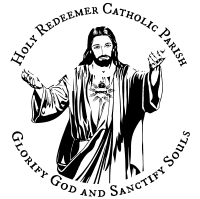The Eucharist, Part 3
Jesus Christ: Yesterday, Today, and Forever ~
A few weeks ago I began a twenty part series on the Eucharist. In case you missed the first two, you can find them here. This is in keeping with Archbishop Etienne’s pastoral letter on the Eucharist that you can find here (in case you missed it). Enjoy.
May God Bless You,
Fr. Thomas Nathe
Trent Horn, 20 Answers – The Eucharist. Catholic Answers Press. 2015
Get your own copy from Catholic.com
Question #3:
Why do Catholics believe the Eucharist is the physical body and blood of the Christ when it looks exactly like bread and wine?
In order to understand why Catholics believe the Eucharist becomes the actual body and blood of Christ after it is consecrated at Mass, we must understand two philosophical ideas; substance and accident. A substance is what something is: an accident is what a substance possesses. So, for example, an apple (a substance) has many accidents. It has a skin of a particular color, a certain weight, shape, taste, and so on. These accidents are what we perceive with our senses, but an apple is more than just a bundle of accidents. These accidents could change, and the apple would remain an apple (that is, the apple could come in a different color or size). These ever-changing accidents are united within one unchanging substance that ceases to exist only when the apple ceases to exist (such as when it is eaten and digested).
When it comes to the Eucharist, the Church teaches that after consecration the substance of the bread and wine – what these objects are at their metaphysical core – changes and becomes the body and blood of Christ. But although the substance of the bread and wine changes, the accidents of the bread and wine – what we perceive of these substances – remain. This is why the Eucharistic host still looks and tastes like bread and the precious blood still looks and tastes like wine. The bread and wine have not transformed, because the form or appearance of the bread and win has not changed. Instead, it is the substance of the bread and wine that has changed, and so Catholics teach that during consecration the bread and wine have been transubstantiated into the body and blood of Christ.
However, the sixteenth-century Protestant Reformers rejected transubstantiation, believing that is was unbiblical and nonsensical. Luther said, “It is an absurd and unheard-of juggling with words, to understand ‘bread’ to mean ‘the form, or accidents of bread,’ and ‘wine’ to mean ‘the form, or accidents of wine.’ Why do they not also understand all other things to mean their forms, or accidents?”
The answer to Luther’s question is that Jesus referred to the bread as his body and the wine as his blood. Jesus did not say, “This bread contains my body” or “I am in this wine.” Jesus just said the bread and wine were his body and blood. But because we still perceive the bread and wine at Mass to be bread and wine, and because Jesus says this is not bread and wine but his flesh and blood, then the only logical conclusion is that although the accidents of bread and wine that we perceive have remained, the substance, or what these things are, has changed into Christ’s body and blood.
Other critics of this doctrine object that the term transubstantiation is found neither in the Bible nor in the writing of the Church Fathers for the first thousand years of the Church’s history. But the reason the term was not used among the early Church Fathers was that there was no disagreement among them about the nature of the Eucharist. They unanimously agreed that the Eucharist represented in a physical and real way the body and blood of Christ (see answer 8).
Moreover, it was common in Church history for doctrines to be officially defined (and terms to be created for those definitions) only when heresy had to be combated. For example, the doctrines of the Trinity and the Incarnation of Christ, were not defined until centuries after the time of the apostles because they were not seriously challenged until then. In order to respond to these Trinitarian and Christological disputes, Catholic theologians developed extra-biblical language to help them explain doctrine and refute heretics. Terms such as homoousios, which describes the one divine substance that belongs equally to each person of the Trinity, and hypostatic union, which describes the complete union of Christ’s divine and human natures, are examples of this.
Something similar happened with the Eucharist. In the eleventh century, a monk named Berengar of Tours argued that the bread and wine became only symbols of the body and blood of Christ. In response to teachings like his, the Church declared at the fourth Lateran Council (1215) that “his body and blood are truly contained in the sacrament of the altar under the forms of bread and wine, the bread and wine having been transubstantiated, by God’s power, into his body and blood.
This teaching was later defined at the Council of Trent in 1551, which taught that “by the consecration of the bread and of the wine, a conversion is made of the whole substance of the bread into the substance of the body of Christ our Lord, and of the whole substance of the wine into the substance of his blood; which conversion is, by the holy Catholic Church, suitably and properly called Transubstantiation.”

